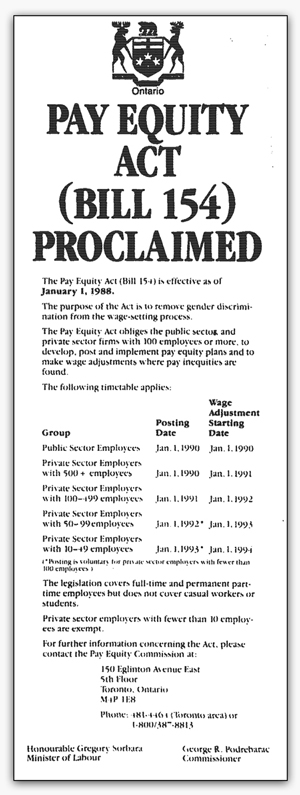
Previous | Exhibit Home | Next
Fair treatment, fair pay, fair working conditions: labour laws have sought these goals, through pay equity or anti-discrimination laws, helping job-seekers with such employment services as the Women’s Bureau, and establishing standards for wages, hours of work, and more.
![Labour bureau, [ca. 1925]](../../../../images/mol/fair/labour_bureau.jpg)
Click to see a larger image
Labour bureau, [ca. 1925]
Photographs of the Audio-Visual
Education Branch
RG 2-71, COT-153
Archives of Ontario, I0012497
In 1920, Ontario passed its first minimum wage legislation.
In 1937, the Industry and Labour Board replaced the Minimum Wage Board, with new authority to make minimum wage orders covering men as well as women.

Click to see a larger image
Bata Shoe Company factory interior,
Batawa, Ontario, [ca. 1940]
Multicultural History Society of Ontario fonds
F 1405-10-17, MSR7256-41
Archives of Ontario, I0004969
1944 saw the enactment of the Hours of Work and Vacations with Pay Act, bringing new standards like paid vacation time.
Employers gave employees credit stamps for vacation pay. Employees collected stamps in booklets and cashed them in at a chartered bank or an Ontario Savings Office.

Click to see a larger image
Ontario Canada's Vacation Province For Your Victory Vacation: welcomes you, 1947
[Front Cover]
Govt Doc T & P Misc Box 2 no 17
Archives of Ontario Library Collection

Click to see a larger image
Ontario Canada's Vacation Province For Your Victory Vacation: for hunting and fishing, 1947
[Back Cover]
Govt Doc T & P Misc Box 2 no 17
Archives of Ontario Library Collection, I0055259
In 1944, Ontario also enacted the Racial Discrimination Act, prohibiting the publication or display of any notice, sign, symbol or other representation expressing racial or religious discrimination.
In 1951, Ontario’s Fair Employment Practices Act was the first law in Canada to forbid discrimination in employment on the grounds of race, creed, colour, nationality, ancestry or place of origin.
That same year, the province enacted the Female Employees Fair Remuneration Act, prohibiting employers from paying a female employee less than a male employee doing the same work at the same establishment.
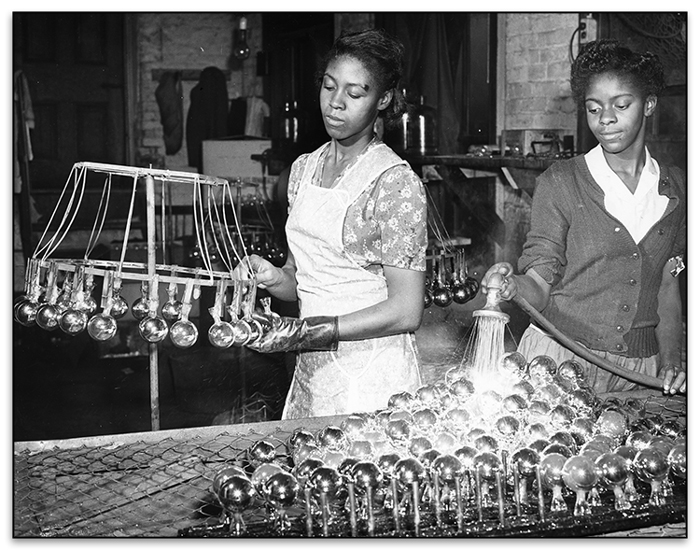
Click to see a larger image
Canadian Glass Ornaments Company employees, Kathleen Carter (left) and Geraldine Carter (right), washing the chemicals off Christmas decorations before paint is applied to them, 1944
Clara Thomas Archives & Special Collections, Toronto Telegram fonds,
F0433 1974-001 / 337 (2257)
York University Digital Library
In 1961, the Ontario Human Rights Commission replaced the existing Anti-Discrimination Commission within the Department of Labour.
The first of its kind in Canada, the Commission formally recognized the moral, social and economic effects of discrimination.
The Commission remained within the Ministry of Labour until 1987.
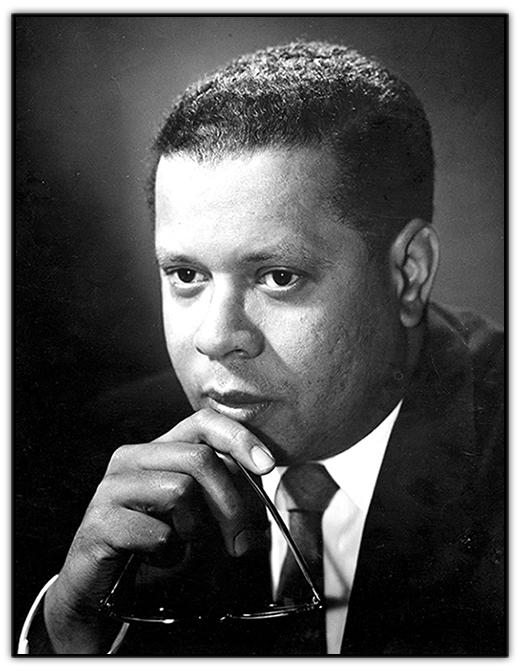
Click to see a larger image
Daniel G. Hill, the first director of the Ontario Human Rights Commission, [ca. 1960]
Daniel G. Hill fonds
F 2130-9-2-13
Archives of Ontario, I0027960
In 1962, the Department instituted a new minimum wage based on hours instead of weeks. Beginning in the most heavily populated and industrialized areas, the wage standards applied in increments across the province to give employers time to adjust.
The new standards included:
-
$1 an hour minimum wage for men
-
85 cents minimum wage for women to an eventual $1 an hour in 1964 – an improvement over previous equality in wages only in the same place for the same work
-
$1.25 an hour in the construction industry
By 1965, the law covered all of Ontario.
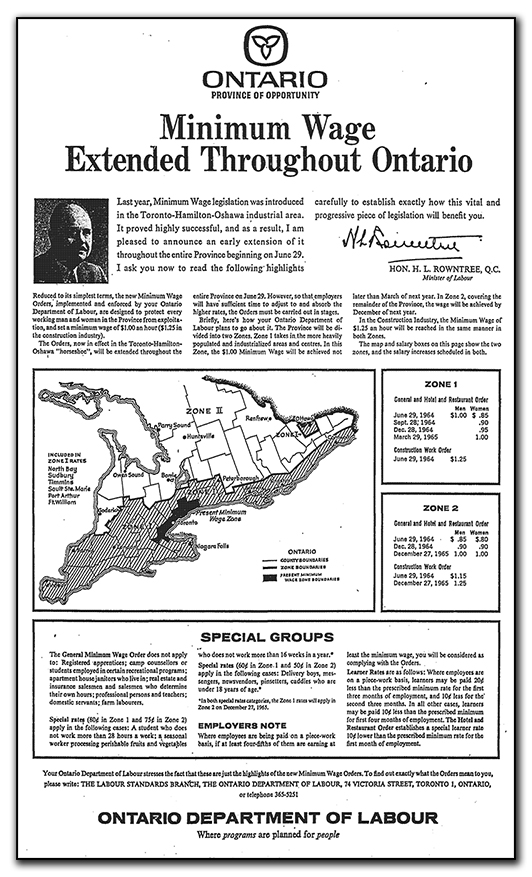
Click to see a larger image
Minimum Wage Extended Throughout Ontario, May 1, 1964
Courtesy of the Ministry of Labour
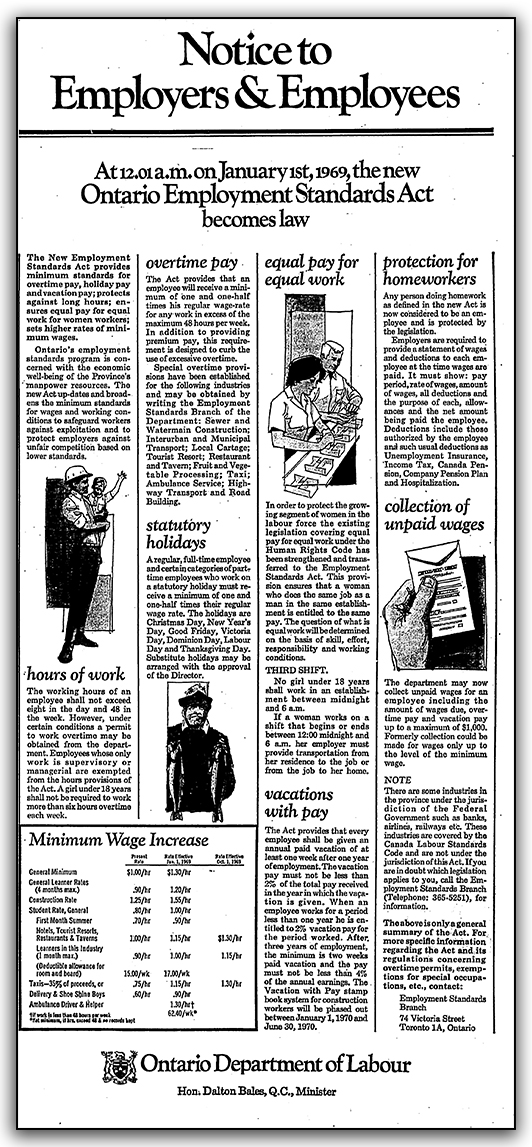
Click to see a larger image
Notice to Employers & Employees, 1968
Courtesy of the Ministry of Labour
In 1968, the Employment Standards Act consolidated all employment standards legislation that came before it.
With a minimum wage at $1.30, it provided for public holidays, hours of work (eight hours a day, 48 hours a week), overtime pay, and enforcement and collections.
During the Act’s first year, the Department collected over $1.3 million in wages owed to over 42,000 workers – nearly a 200 percent increase over the previous year under former laws.In 1963, Ontario was the first provincial jurisdiction in Canada to establish a Women’s Bureau, recognizing women made up one-third of the labour force. The Bureau advised women on employment and training and educated women and girls on careers and opportunities.
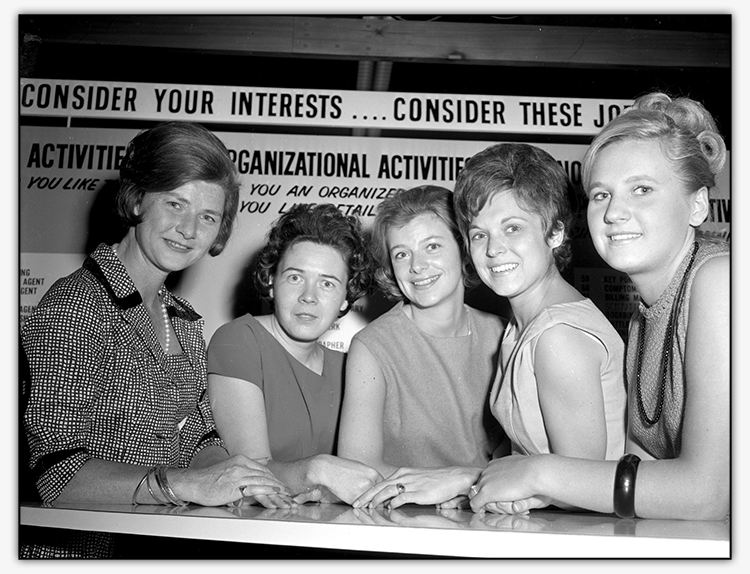
Click to see a larger image
Department of Labour Women’s Bureau booth, August 21, 1965
Courtesy of the Canadian National Exhibition Archives
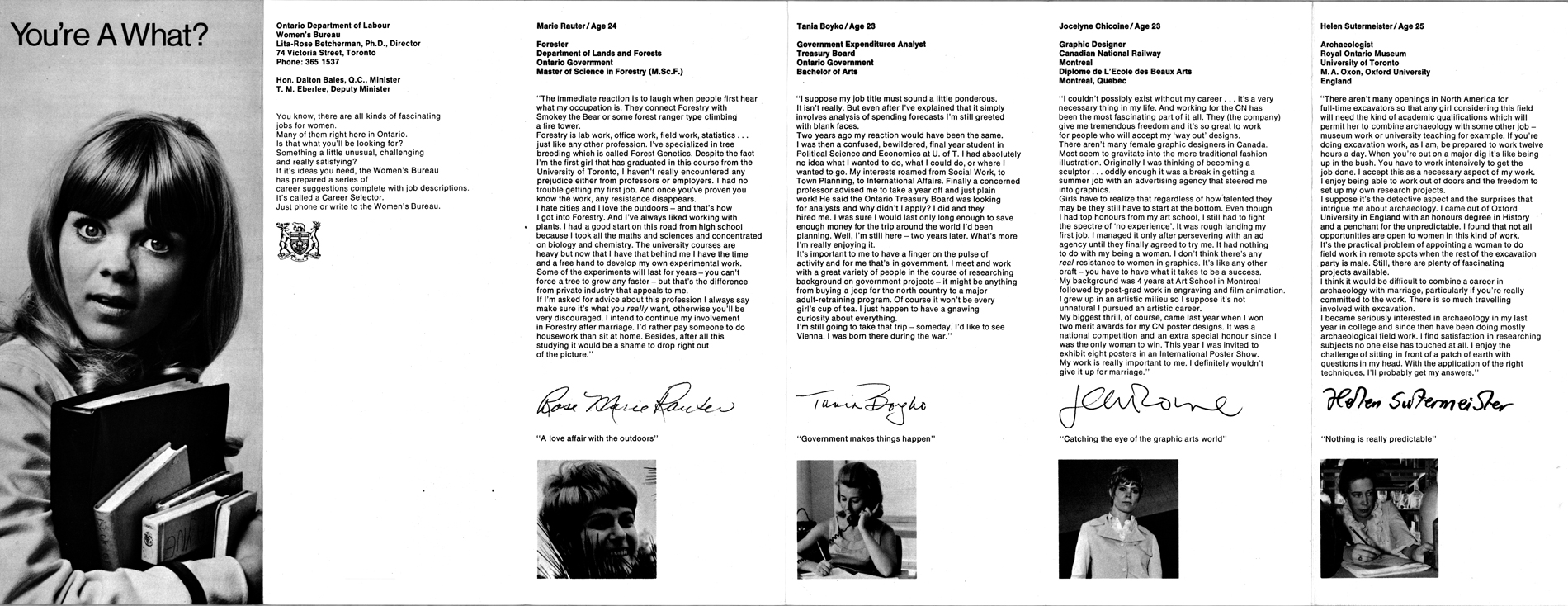
Women’s Bureau publications
RG 69-3
Archives of Ontario, I0073853

Click to see a larger image
Work Programs, St. Thomas-Elgin – SPIEL, 1971
St. Thomas Times-Journal fonds – Work Programs
C9 Sh2 B2 F33 26
Elgin County Archives
Students working for the S.P.I.E.L. program (Students Providing Information on Employment Rights to the Labour Force).
London students run the Ministry of Labour’s “SPIEL” Student Program providing Information on Employment rights to the Labour force, June 28, 1973
CFPL Television Newsreel Air-Cuts
F 4396-1-1-4605
In 1970, the Equal Employment Opportunity Act improved equal job opportunities for Ontario’s working women. It prohibited employment discrimination based on sex or marital status. This legislation also prohibited dismissal for pregnancy and provided for up to 12 weeks maternity leave for some employees.

Click to see a larger image
Chris Buczek, first female O.P.P. diver, Dec. 1, 1976
Ontario Provincial Police
Public Information File photographs
RG 23-34
Archives of Ontario, I0055260
In 1987, the Pay Equity Act passed as a proactive response – rather than reactive – to redress enduring systemic gender discrimination affecting work performed by people in female job classes.
The Pay Equity Act created obligations for employers to pay workers in traditionally female jobs at least the same as traditionally male jobs if the jobs are of comparable value.
